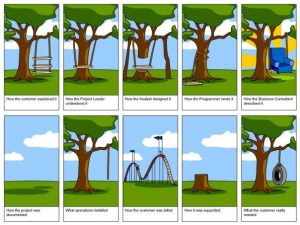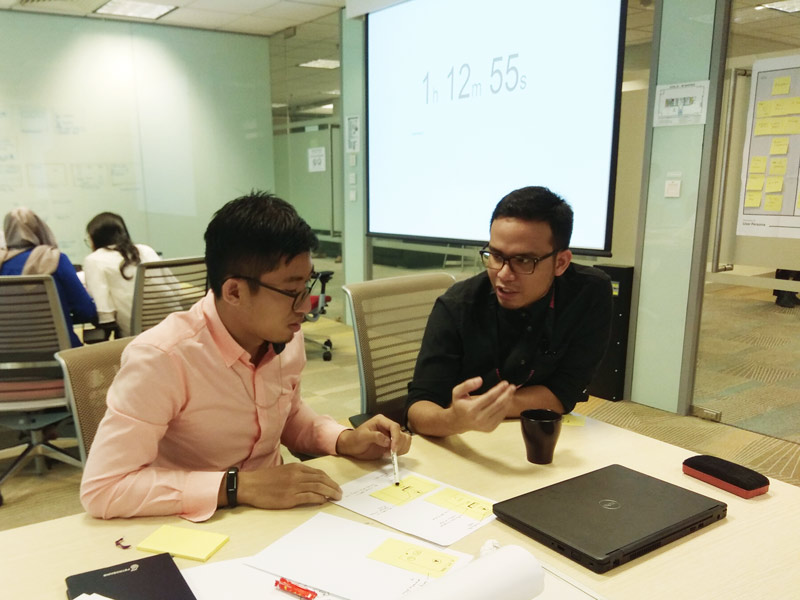Let’s face it: Research is something we all do every day. For instance, there is a movie we’d love to watch over the weekend, so we hop onto the Internet to scour the price and showtime. Then we ask ourselves, “Is it a good movie?”, “What are the reviews saying about it?” and “Is it trending on Twitter?”.

Were answers provided to our questions? Not quite, because we doubt the reviews but we’d love to watch it anyway. So we set up expectations, or metrics – that if something happens or does not happen in the movie, then it’s going to be good. So we go. It ends up making us feel good. Hypotheses proved, metrics met.
In this case, we are the end user. So it is easy to conduct research based on the persona we know best – ourselves. But what if we are taking someone on a date to see the movie, whose favourite genre is entirely different from ours – and impressing him/her is paramount?

The scenario is no different in the user experience (UX) when you are building products, services, applications and websites for people who are intended to use the website, and whose opinions and impressions matter.
In UX, research is important to ensure that we are designing it for the users, instead of ourselves. The formalised research is called UX research, which helps us identify, prove or disprove our assumptions, recognise their needs, mental models, their pain points, challenges as well as what unites them together towards the common goal of using the product. Essentially, research shall add information to our work, improves our understanding and validate our decisions.
How do we start?
Created by Erin Sanders in this article, the Research Learning Spiral provides five main steps for conducting UX research. The first two steps are about forming questions and hypotheses, and the last three steps are about gathering knowledge through selected UX research methods.
- Objectives. What are the knowledge gaps we need to fill?
- Hypotheses. What do we think we understand about our users?
- Methods. Based on time and manpower, what methods should we select?
- Conduct. Gather data through the selected methods.
- Synthesise. Fill in the knowledge gaps, prove or disprove our hypotheses, and discover opportunities for our design efforts.
There are many ways to do UX research. The most important question is: how do we frame it within many other factors? These factors can include:
- The end goals of the product – both from business and users’ perspectives
- Time constraint
- Accessibility (to information, users, stakeholders, decision makers etc.)
- Other limitations
The first three are the most common factors we encounter in Stampede. In taking considerations of these factors, we work closely with clients to ensure that we get as much information as possible in the research stage before we begin in the UX designing phase.
The end goals of the product

When a UX research does not take place…
As much as it called UX (user experience), there is another goal that UX researchers and strategists should take note of as well – that is, business goal. A business, or a client, will have a set of expectations at the end of the process as to how the product should benefit the business, and how we can measure it later.
For example, after 3 months of launch, they’d like to see the sales increase 300%.
For strategists, this is an important thing to note – as we can reverse engineer our way in finding out how to increase the sales by 300% through a number of methods, which should be specified in research.
Secondly, the most important thing is of course, to consider the needs of the users. For example, by the end of the process, the client should be receiving testimonials as how easy it is to use the website now. Other ways to measure this expectation is also to install heat map analysis tools for your websites such as Hotjar, Crazy Egg or ClickTale.
The tools on UX shall be explained later in Part 3.
Time constraint

As much as we like to talk to as many users as possible and take much longer to conduct research, most of the time we do not have that luxury.
Typically, user research stage in Stampede takes place for the first two weeks after a UX project kicks off. At this point, as we work closely with our clients on securing the business and user end goals, we also narrow down the best methodologies as possible to fit in the timeframe.
For example, in the course of two weeks, it is quite impossible to conduct a physical workshop involving the main stakeholders who are scattered all over the country. It takes a lot of time by itself for the arrangement and logistics, let alone preparing and conducting it.
So what do we do? In the research stage, we ask the clients…
- … for the contacts of key primary users we can get hold of and ask them for time to do usability tests – depending on accessibility arrangements, if any (see next point)
- … if there are existing products they like, and we do comparison reviews
- … if there are existing data of users we could take a look – users statistics, testimonials, dev site links, wireframes etc. Every data should come of use.
We shall talk about knowing which UX methods to use later in Part 2.
Accessibility
Another factor to take into consideration before starting on the UX research journey is to find out the accessibility of the key stakeholders. These can be:
- The decision maker from the client side – most likely the product owner
- How accessible we are to users if we intend to interview or do usability testing?
Other limitations
When we talk about user experience we often forget about the most important thing: the user’s experience. Too often we are so obsessed with clever solutions and stunning visuals that they completely ignore the fact that their users won’t care about it as long as it works. This is why limitations are key to great UX. The odds of achieving a clear and understandable user experience are way higher if you limit yourself and the features of the product you’re designing depending on the users’ needs.
Other limitations that might surface before you start on UX research would be:
- Scope given by client. There are clients who are lenient about us experimenting and suggesting, but it is always good to check with them every single time.
- Client approval
- Other items that might have been mentioned in Non Disclosure Agreement (NDA) e.g. the limits to how accessible the current site data might be, their users or disclosure of current information etc.
All of these can help us to narrow down how to begin our UX research and determine which methodologies to use in the next stage.
What’s next?

Now that we have established the factors that will help us to move to the next stage, here’s one thing to keep in mind: the biggest mistake a UX strategist can make is excluding end users from the process. Start the design process by including the users from the start, listen to their disappointments, pain points as well as what makes them happy – not only while using the product, but also understanding their mental model in general.
In conclusion, UX research is a very interesting process in a sense that it helps us avoid our biases since we are required to figure out solutions for people who are different from us.
What factors have you considered before you embark on a user experience research? Share with us in the comments section!
There are a number of popular methods used in improving the user experience at all phases of research and design. We shall take a look at some popular methods and when you should use them in Part 2: Which Methodologies Should I Use?
